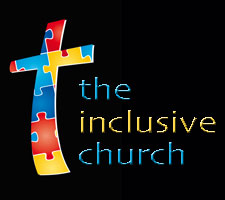Safety in Children’s Ministry
Because of my passion for children’s ministry, I have the opportunity to observe many church environments. Most churches regularly address risk management, abuse prevention and general security with their volunteers. Good safety practices are indoctrinated into their volunteers and parents as soon as they get involved in the ministry. When I find a children’s ministry with a solid safety culture, invariably I find a strong leader at the helm, taking security seriously and leading by example.
Occasionally I am taken aback when I come across a church that lacks a strong safety culture. While requiring background checks is a must, it is only a first step toward providing a safe environment. Unfortunately not every church has adopted child protection policies. And sometimes churches who have developed in-print safety guidelines are still failing to implement those practices. While the number of injuries and reported abuses occurring in the church setting are small, unfortunate situations do happen. As the daughter of a senior pastor I hear “inside” stories that often don’t make the news. Churches are not safe havens from accidents and incidents. Not everyone who comes through the doors of a church has good intentions or common sense. And it is naïve for a church staff to assume that everyone involved in their ministry shares a common standard for safe care.
I recently participated in an online safety webinar with the Centers for Disease Control. The webinar was led by the CDC team responsible for providing sex abuse prevention awareness and training to organizations like YMCA’s and churches. The Webinar brought up the fact that children with special needs are at greater risk for abuse than the general population of neurotypical children. And while that abuse may not occur at church, everyone in a child’s circle is under suspicion if the individual shows signs of being abused. A church ministry team can clear themselves from the circle of suspicion more easily if they follow good safety practices (e.g. a child should never be left alone unless two unmarried adults are present; no males assist in toileting or diapering). It is for these reasons that safety becomes even more important as churches become more inclusive (as they should).
Parents can play an important part of the safety culture by thanking the children’s ministry team whenever they observe good practices in place. It may feel inconvenient if not insulting when a parent is asked to provide their check-in tag or show ID when they arrive to checkout their child. However, the request is actually a great sign that the church has a commitment to child protection policies. Churches are not as uniform in their standards as public schools. So parents shouldn’t be afraid to ask church leaders if the children’s ministry provides training or a ministry handbook to volunteers before they begin serving. And there is no better way to learn about and influence a children’s ministry than to begin serving as a regular volunteer. ~ Amy Fenton Lee
Related links:
Sunday School Safety and Security
Does Security Really Matter in Your Children’s Ministry?
Grace Church (Greenville, SC) Children’s Ministry Safety Plan
More on Safety in Children’s Ministry – Part 1 Volunteer Handbook & TeensVolunteers
More on Safety in Children’s Ministry – Part 2 Check –Out, Transitions, Outside visitors, Strollers
General Children’s Ministry Policies & Procedures
Trackbacks & Pingbacks
- Starting a Special Needs Ministry « The Inclusive Church
- A Personal Note « The Inclusive Church
- The Children’s Ministry Blog Patrol (August 2010) | Dad in the Middle
- More on Safety in Children’s Ministry – Part 1 « The Inclusive Church
- Addressing Aggressive or Unsafe Behavior « The Inclusive Church
- Why Safety Practices Matter in Children’s Ministry « The Inclusive Church
- Steps to Increase Safety in Children’s Ministries «



P.S. Parents will learn far more about the safety practices (and Bible teaching!) inside a children’s ministry by getting involved and helping out. And if you (as a volunteer) didn’t receive any training or guidelines, probably no one else did either!
My husband and I are active kidmin volunteers in our church. We see see the practices in place and the children’s ministry staff has earned our trust as parents (very competent team). But you cannot assume a children’s program is run SAFELY without diving in and seeing what’s going on for yourself.
hi amy!
this is great stuff. I didn’t get to read the articles yet, but will do so soon. We have a great safety team here in lima but always need to be aware of overcommunicating this info. Your passion is inspiring!!
Thanks Lindsey! I have NO doubt that your team in Lima loves YOUR energy and contagious passion for excellence. I look forward to following you (and learning from you). So good to meet you at CMX – I’ll be back next year!
Really glad to see this being talked about. I really appreciate your balance on the issue.
Thanks Tony – your articles are fantastic. I will spotlight and link anything you feature on this subject…it is so important!
Lifeway just posted this GREAT entry on their Kids Ministry 101 blog on this topic!
See the following link:
http://bit.ly/hMdgiC
Thanks for sharing this, Amy. I’ve seen this happen before too – ministries that have excellent written procedures that are never actually followed. If you’re interested, I’ve compiled a list of children’s ministry security best practices on my website: http://adambayne.wordpress.com/2010/09/14/beefing-up-security-in-childrens-ministry/